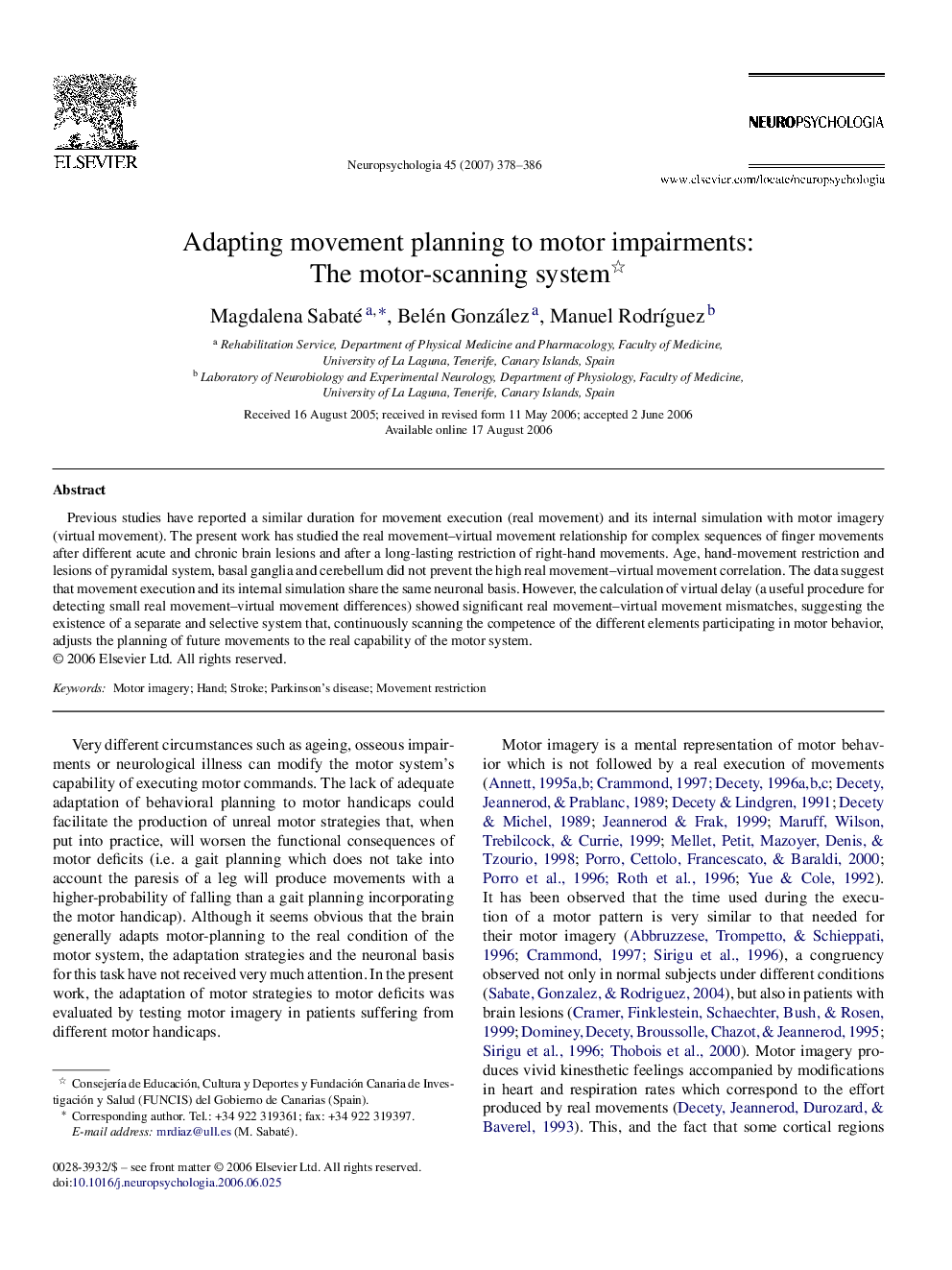| Article ID | Journal | Published Year | Pages | File Type |
|---|---|---|---|---|
| 10467073 | Neuropsychologia | 2007 | 9 Pages |
Abstract
Previous studies have reported a similar duration for movement execution (real movement) and its internal simulation with motor imagery (virtual movement). The present work has studied the real movement-virtual movement relationship for complex sequences of finger movements after different acute and chronic brain lesions and after a long-lasting restriction of right-hand movements. Age, hand-movement restriction and lesions of pyramidal system, basal ganglia and cerebellum did not prevent the high real movement-virtual movement correlation. The data suggest that movement execution and its internal simulation share the same neuronal basis. However, the calculation of virtual delay (a useful procedure for detecting small real movement-virtual movement differences) showed significant real movement-virtual movement mismatches, suggesting the existence of a separate and selective system that, continuously scanning the competence of the different elements participating in motor behavior, adjusts the planning of future movements to the real capability of the motor system.
Related Topics
Life Sciences
Neuroscience
Behavioral Neuroscience
Authors
Magdalena Sabaté, Belén González, Manuel RodrÃguez,
